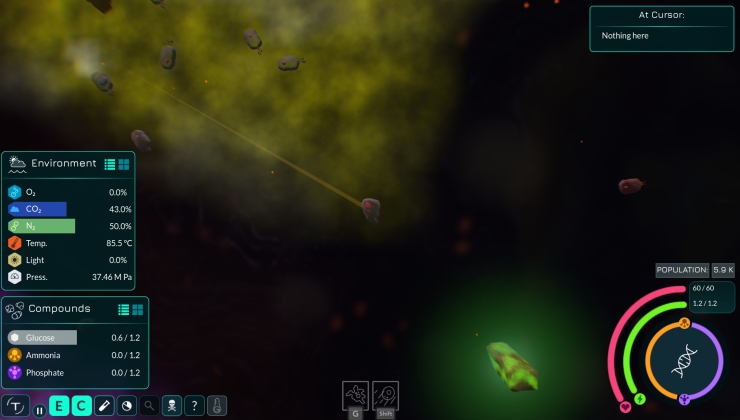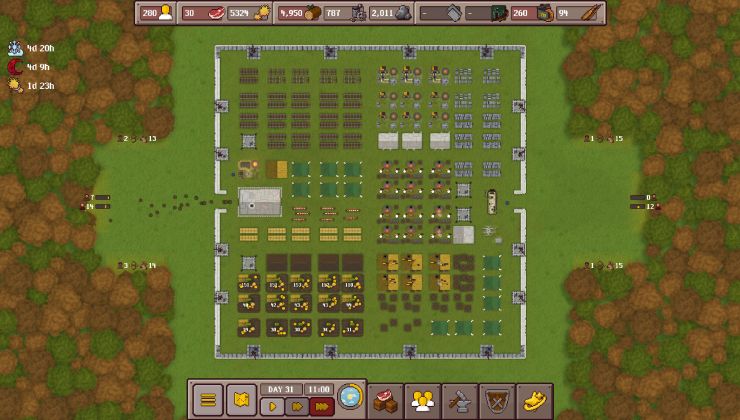elementary OS is probably the most slick looking Linux distribution around, and their attention to all the small styling details is truly awesome. The next major release is looking like a big overhaul.
Announced on their blog post, one of the major user-facing changes will be the theme. They're moving from their original CSS based styling which has been going for 7 or so years over to a more modern Sass system, which is CSS but a lot more feature-filled. They say it makes it easier to maintain their dark style, better compatibility for apps built directly for GNOME's "Adwaita" style and overall just easier to maintain. It should look very similar but have better lighting, shadows, contrast and lots of other subtle improvements.
One new feature I'm quite pleased to see is their "Screen Shield". They've replaced Light Locker, the simple session-locker with their own which should better respect apps that inhibit your screen locking and sleeping, so you should hopefully see far less screen dimming to lock while you're sitting back with that coffee watching Netflix.
Another of the major upgrades will be the introduction of system-wide Flatpak installs. Currently you can install them as your user but they're taking that a step further so they can supply some of their own software as a Flatpak to enable much faster updates and more secure applications. The first of which will be the web browser Epiphany, meaning on elementary OS 6 you will get the latest and greatest quicker.
They're also building in better accessibility features, making preparations for Wayland support, a new settings daemon to provide additional features and integrations with their own custom stuff, a much better notifications system and improved multi-touch gestures support. Overall, it sounds like it's going to be a great Linux distribution release.
You can try out elementary OS 6 right now if you sponsor them on GitHub.
Their way of funding their work on the distribution is certainly interesting, with one way giving you the option to pay any amount (yes, even zero) for your ISO download right there on the homepage. Open source software takes a lot of effort to produce and a pay what you want style is pretty great.
Find out more about elementary OS on their website.
The steam Flatpak has caused me Infinitely less headaches than any native package.
Unfortunately I have had less than awesome experiences with Flatpak, but I still think it's a great way to distribute applications for all distros. That said I personally use Guix because I have had much better experiences with it.
I can say that I'm no fan of the Gnome-like app naming scheme, where apps don't have names so much as category titles. Video, Music, Camera, Files, etc., etc. --- these are the names of my Data files, the ones that I interact with using VLC, Shotwell, and Thunar. But that's just a personal-taste thing.
I've become ever less enamored with Flatpak apps. I've been let down a few too many times by apps not being regularly updated, or little problems interacting with the local system. Nothing like the pair of concrete shoes that are Snap packages, mind you, but not as easily used as Appimages either.
What I really want to know are those things that are pertinent to myself as a daily reader of www.gamingonlinux.com. How good is it as a gamingd OS? How easy is it to install Nvidia and AMD GPU drivers, for example? Especially the former, as EOS is FOSS-centric. What gaming peripherals work with EOS out of the box? Etc.
I'd like to hear from former and present EOS users here on GoL about their experiences with EOS.
Flatpak is a horrible way to distribute binaries. Appimage are the most interesting way to do that.I'd consider both a major improvement over distribution-specific deployment methods for applications that I want to be regularly updated and I'm fine with different techologies available, as all have strengths and weaknesses.
So what exactly makes Flatpak so horrible?
Last edited by const on 6 Oct 2020 at 5:54 pm UTC
The Software Manager/Store(!):
There are some great apps made specifically for elementary, perhaps because they provide a direct option to donate/pay in the software manager. The monetization option is controversial, but honestly how many actually go through the effort to even look up a developer of a random application, and then follow through and donate some monies?
Design guidelines:
Strict design language and guidelines is a good thing to have consistent UI experience. The downside is of-course that taking a hard stance is going to break some applications that were not designed for pantheon/elementary. But if you only use applications made for it the experience is great.
I think these elementary design guidelines essentially spurred a healthy discussion amongst GNOME developers. The GNOME desktop was never intended to be skinned, but people obviously did it anyway, also the old icon style was too complicated.
For the record I don't use elementary OS myself on a daily basis, mostly because I dislike the file manager (especially the search feature of it, the only GUI file manager I truly like on Linux (Nemo) does not render/look right in pantheon
But with that said elementary is a distro I follow with big interest and donate to regularly, because I think it is almost a perfect OSX replacement for Apple refugees not wanting to switch to ARM.
Flatpak is a horrible way to distribute binaries. Appimage are the most interesting way to do that.
Appimages are not new comer friendly: they have to be chmodded to make 'em run. This alone is too much for a new user. Appimages are also not mandatorily sandboxed, so a security risk more or less.
Flatpaks and snaps are a thing, really. Both improving all the time too.
Flatpak is a horrible way to distribute binaries. Appimage are the most interesting way to do that.
Appimages are not new comer friendly: they have to be chmodded to make 'em run. This alone is too much for a new user. Appimages are also not mandatorily sandboxed, so a security risk more or less.
Flatpaks and snaps are a thing, really. Both improving all the time too.
Last time I clicked on an AppImage link in manjaro, a little installer application came up, asked me if I wanted to install it or install and run it. The experience was pretty flawless. So I guess it depends on how the distro handles it, once again. Pretty much the same as with flatpak. Those only are really usable if the distro handles them well.
What I really like about flatpak and snaps is how a lot of package managers handle updates already. Haven't seen anything compareable for appimages yet. :)
Last edited by const on 6 Oct 2020 at 8:01 pm UTC
Flatpak is a horrible way to distribute binaries. Appimage are the most interesting way to do that.
Appimages are not new comer friendly: they have to be chmodded to make 'em run. This alone is too much for a new user. Appimages are also not mandatorily sandboxed, so a security risk more or less.
Flatpaks and snaps are a thing, really. Both improving all the time too.
Completely desagree. Any human being will be able to right click on the Appimage file, select properties and mark the file as executable.
It just works.
I wouldn't say flatpaks or snaps are more secure than Appimage. If the security depends on the developer, the same security issues are in all package methods.
Also, snaps are bounded to Canonical, which is annoying, flatpaks are too big, it like hundreds of MB for a 5 MB app.
Also if you are on a distro that hasn't it pre installed, you have to go to the terminal and type some commands which is not trivial for newbies.
Also with Appimage it's very easy to keep different versions of the same app and you can even get some in a USB stick and run where you want. It's more convenient and less painful.
In my last comment I wrote something about it.Flatpak is a horrible way to distribute binaries. Appimage are the most interesting way to do that.I'd consider both a major improvement over distribution-specific deployment methods for applications that I want to be regularly updated and I'm fine with different techologies available, as all have strengths and weaknesses.
So what exactly makes Flatpak so horrible?
But over the intervening years, I just found it easier to use Ubuntu with default gnome - and tweak somethings to make feel it like elementary / pantheon...
I still want to love elementary - but each time I try it again, I just find the locked down nature of some things too limiting...
One good thing that may come from this is getting plank working on wayland!!!
The only thing I don't like about flatpaks is the auto-update. I stopped using Windows specifically because Microsoft tries to remove the option from users on when/what to update. Now flatpaks do it too? Or am I wrong? Maybe I am, I'm still a noob. Is there an easy GUI way for a Linux noob to decide which flatpaks to update and when, like it's done with the apt applications?Flatpak on it's own does not have an auto-update feature. Some distros and DEs add there own system for flatpaks to update automatically, so you may be able to disable it in your distro's settings.
On Linux Mint, for example, the toggle-switch for flatpak auto-updates is under Preferences->System Settings->Startup Applications (Uncheck the "Apply flatpak updates" switch). On other distros, there ought to be a similar option.
I should note that you might have confused flatpaks with Snaps, another cross-distro packaging format. Snaps do auto-update, and there is no way to turn it off.
Also, [see this discussion on the Flathub forum](https://discourse.flathub.org/t/availability-of-old-versions-of-a-flatpak-at-flathub/670) about installing old versions of flatpaks.
Is there a even a single distro that features snap and flatpak parameter modification for troubleshooting (like directory access) or even simple cleanup and maintainance of dependencies or old data without requiring you to drop to the CLI?Flatpak is a horrible way to distribute binaries. Appimage are the most interesting way to do that.
Appimages are not new comer friendly: they have to be chmodded to make 'em run. This alone is too much for a new user. Appimages are also not mandatorily sandboxed, so a security risk more or less.
Flatpaks and snaps are a thing, really. Both improving all the time too.
How is that new user friendly in any way shape or form, compared to a one file - click to run or delete - Appimage?












 How to set, change and reset your SteamOS / Steam Deck desktop sudo password
How to set, change and reset your SteamOS / Steam Deck desktop sudo password How to set up Decky Loader on Steam Deck / SteamOS for easy plugins
How to set up Decky Loader on Steam Deck / SteamOS for easy plugins
See more from me